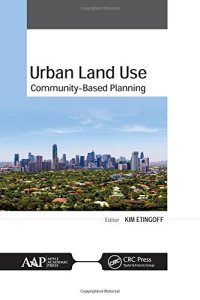
Ebook: Urban land use: community-based planning
Author: Kimberly Etingoff
- Tags: City planning, Case studies., City planning, Citizen participation, Case studies., Community development Urban., City planning, Decision making, Case studies.
- Year: 2017
- Publisher: Apple Academic Press : CRC Press
- Language: English
- pdf
This compendium volume, Urban Land Use: Community-Based Planning, covers a range of land use planning and community engagement issues. Part I explores the connections between land use decisions and consequences for urban residents, particularly in the areas of health and health equity. The chapters in Part II provide a closer look at community land use planning practice in several case studies. Part III offers several practical and innovative tools for integrating community decisions into land use planning.
Land use decisions are often an invisible part of urban communities across the globe. However, their effects are anything but invisible. Urban land use patterns directly impact residents, and do so unequally across segments of the population based on income and race. Fortunately, land use planners are increasingly recognizing the need for meaningful and skillful community engagement strategies in order to rectify the consequences of historical land use decisions, and to build healthier, stronger future communities through responsive land use planning.
The editor carefully selected each chapter individually to provide a nuanced look at community-based urban land use planning. The chapters included cover a wide variety of issues, including
- the relationship between land use decisions, resulting environmental conditions, and unequal health consequences for residents
- the substantial co-benefits of land designed for physical activity, including physical and mental health, social benefits, safety, sustainability, and economics
- urban health equity indicators to identify problems with the built environment and move cities toward better management of resources to create healthy communities
- how new media forms allow citizens to engage with and affect the built form of their communities.
- ways in which community organizations in low-income neighborhoods can be effective in working with city planning services that have few resources
- a GIS-based collaborative decision tool to make land use decisions regarding vacant land redevelopment
- interactive community planning that incorporates multiple stakeholders with the goal of economically stimulating, conserving ecosystems, and meeting social needs
- community land trusts as a way to democratically determine land use
Taken as a whole, these chapters are a basis for furthering effective community input processes in urban planning. Together, planners and community members can make cities work better for all residents.